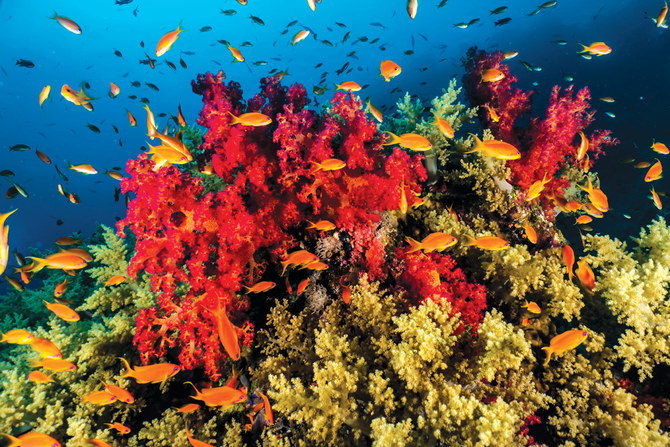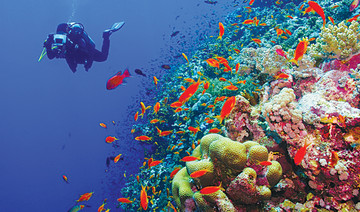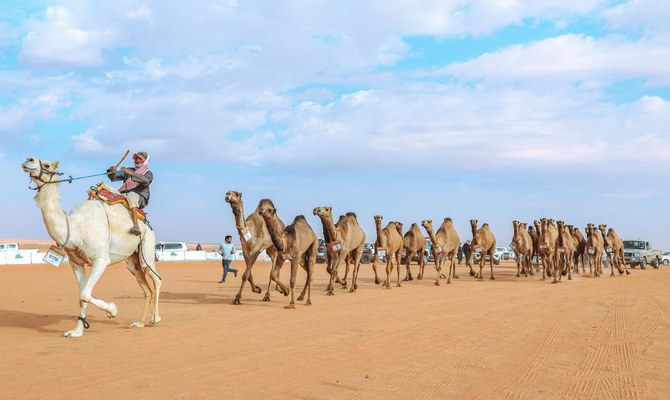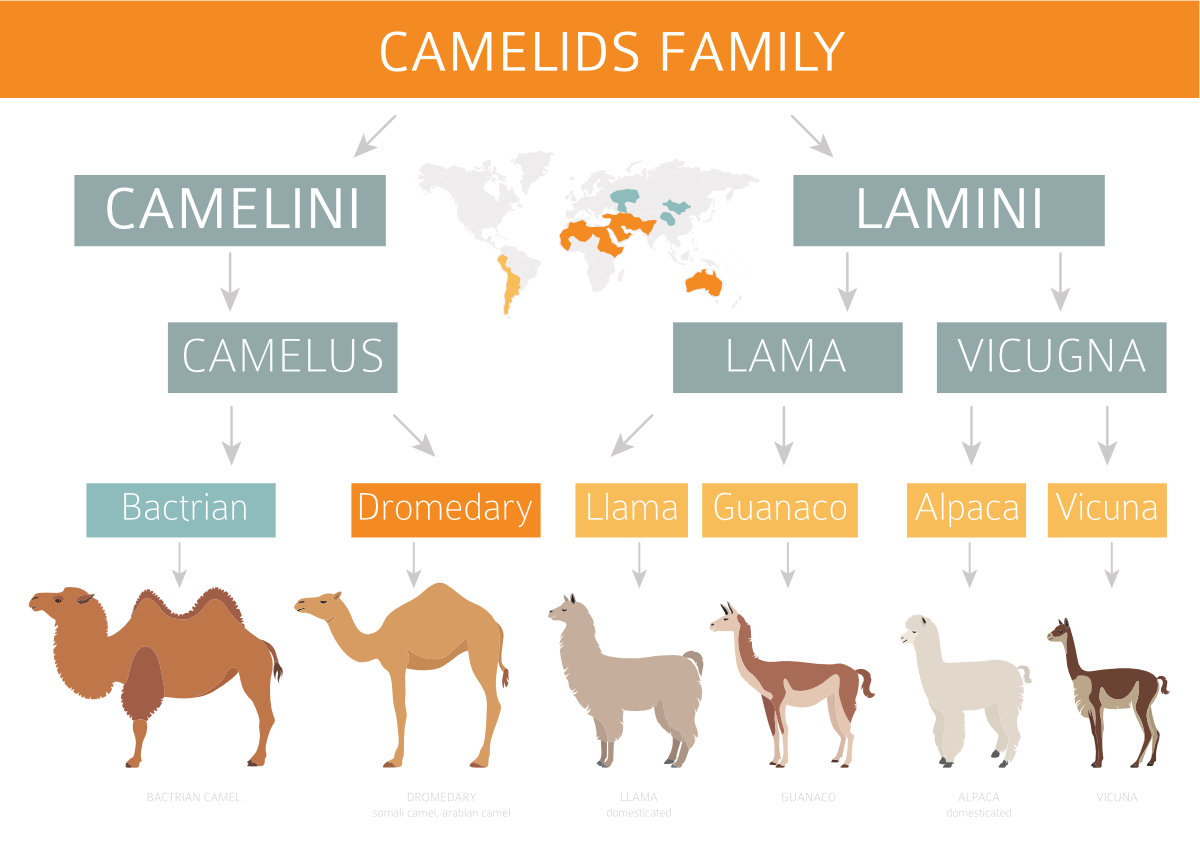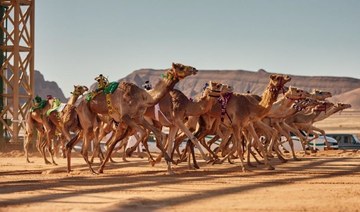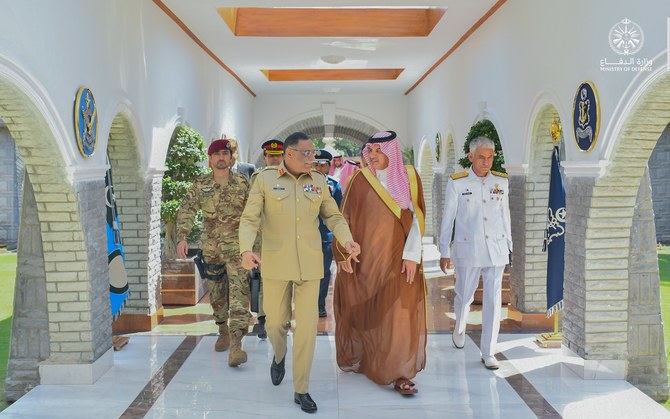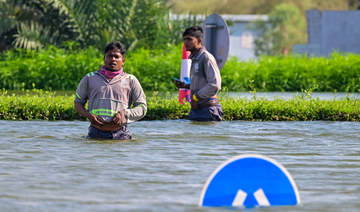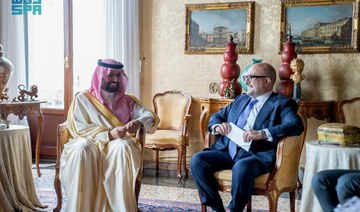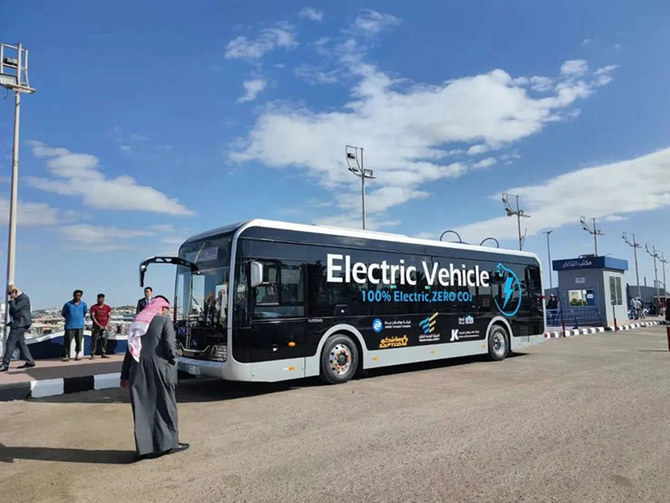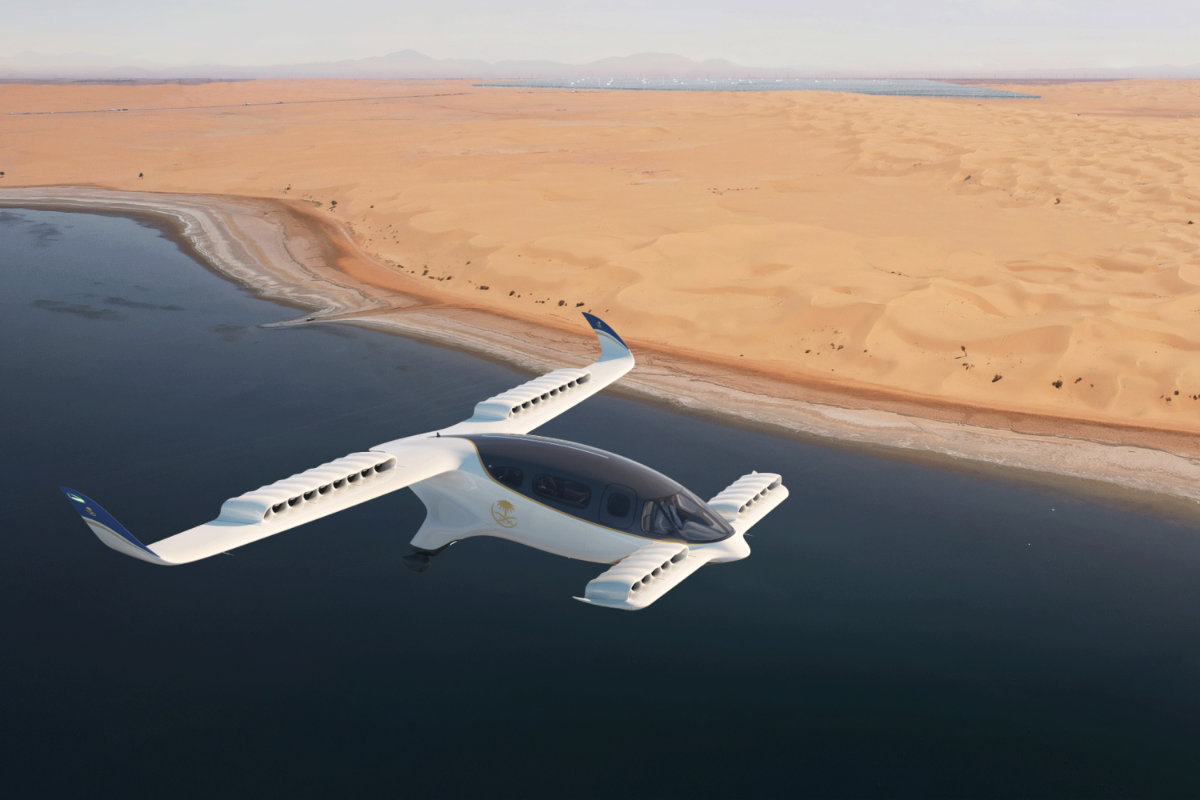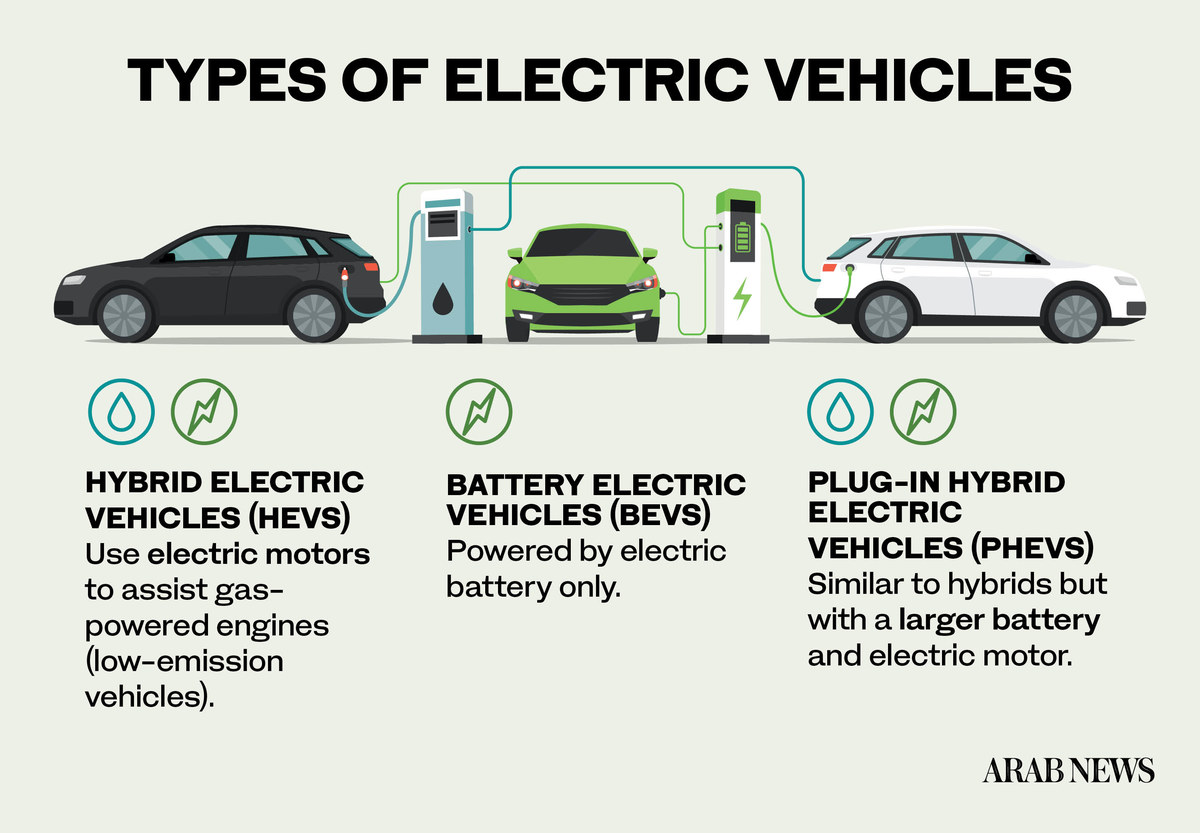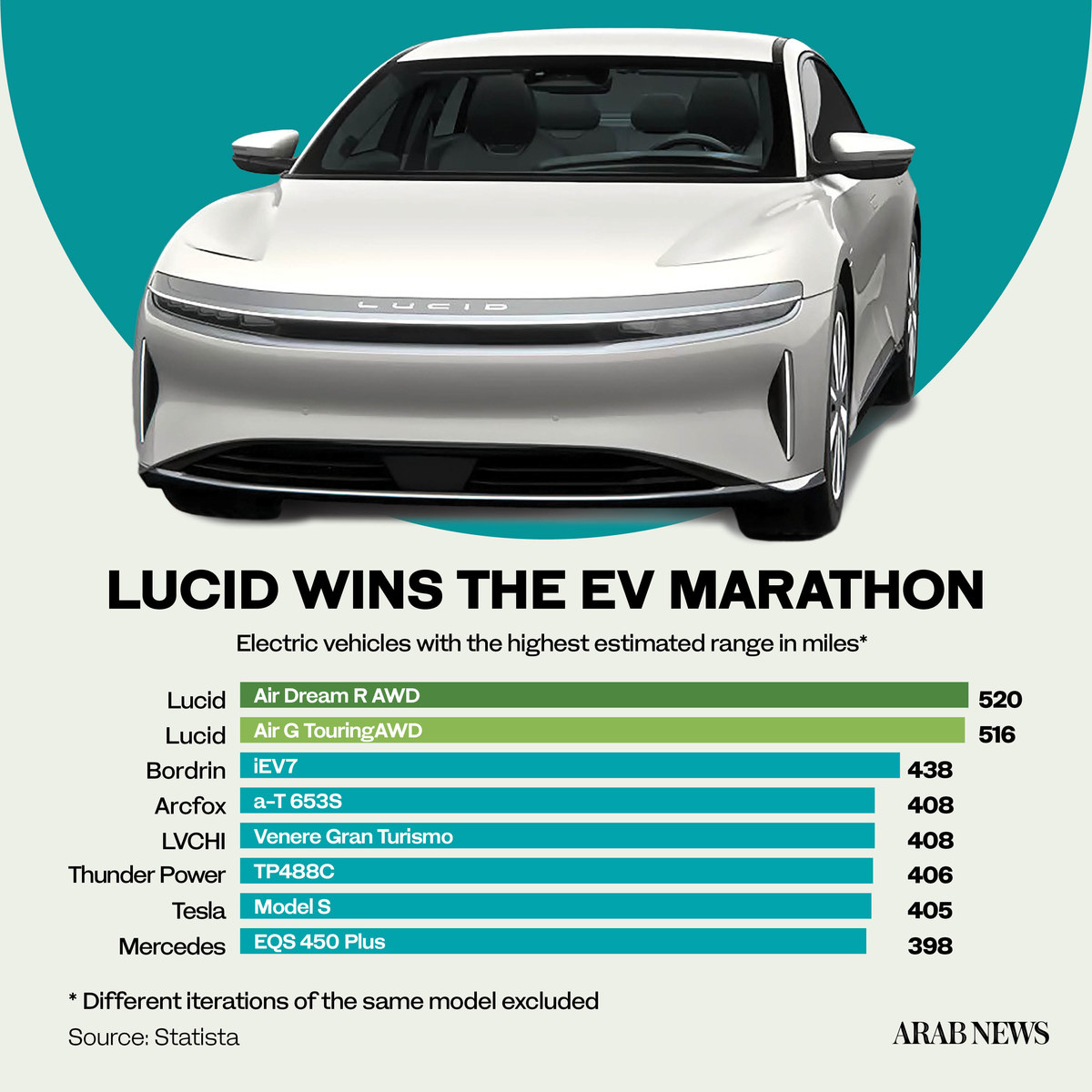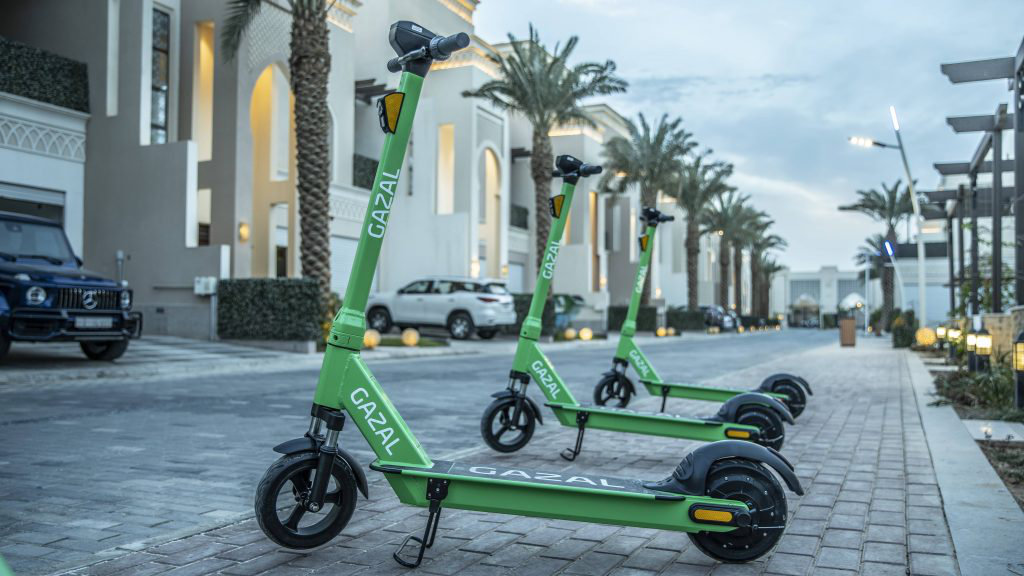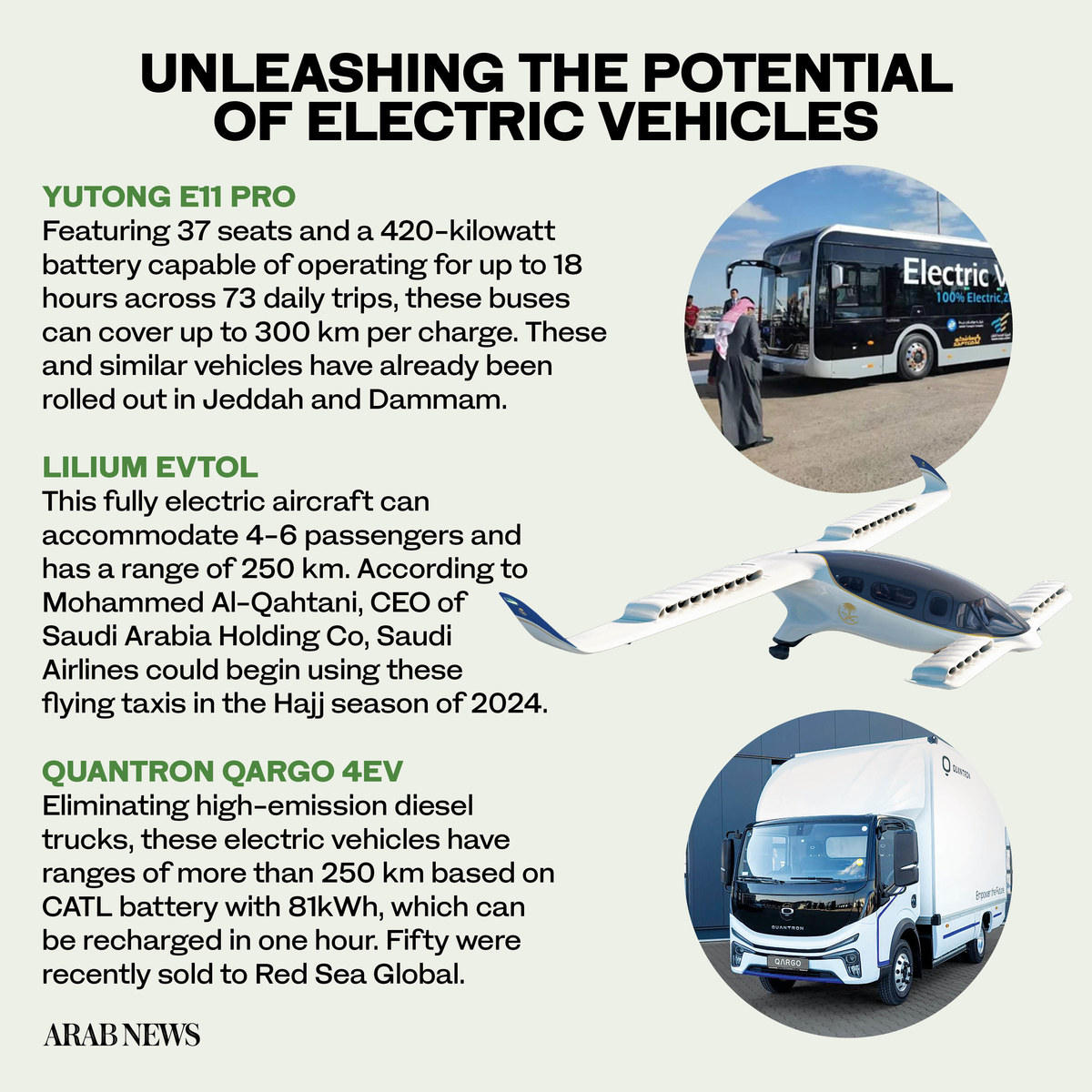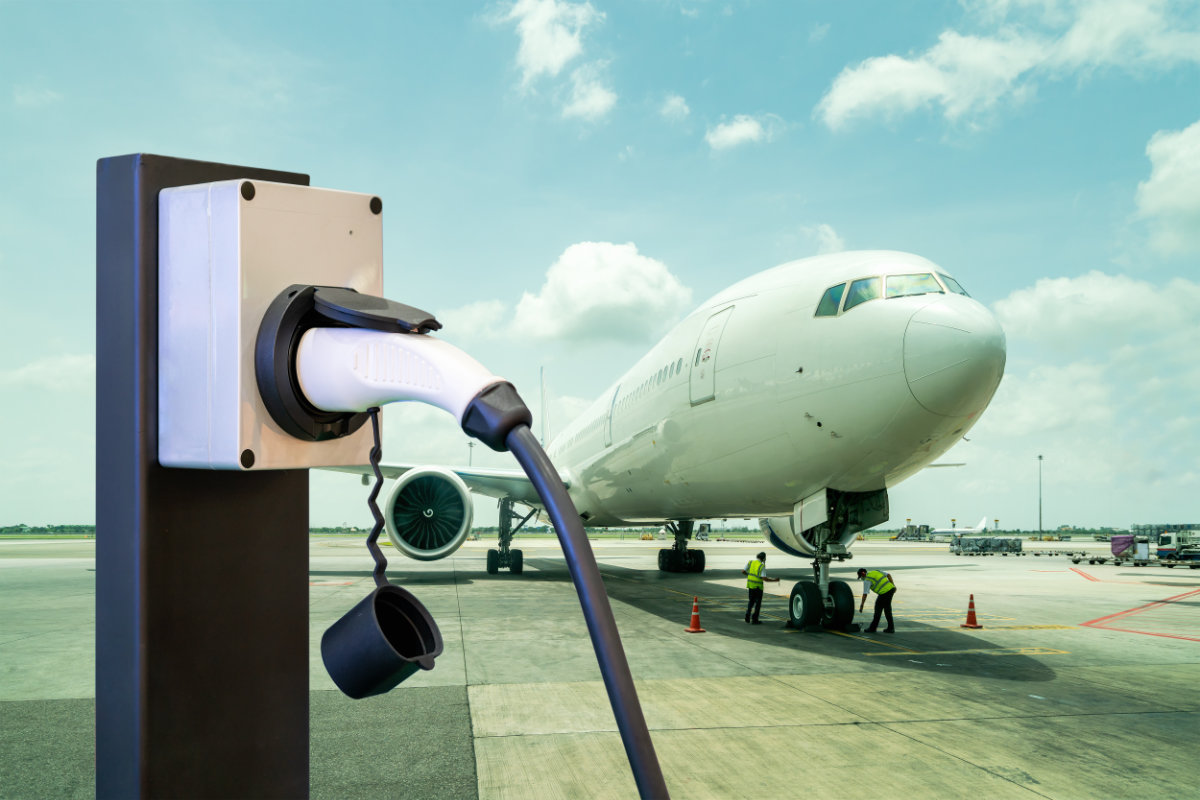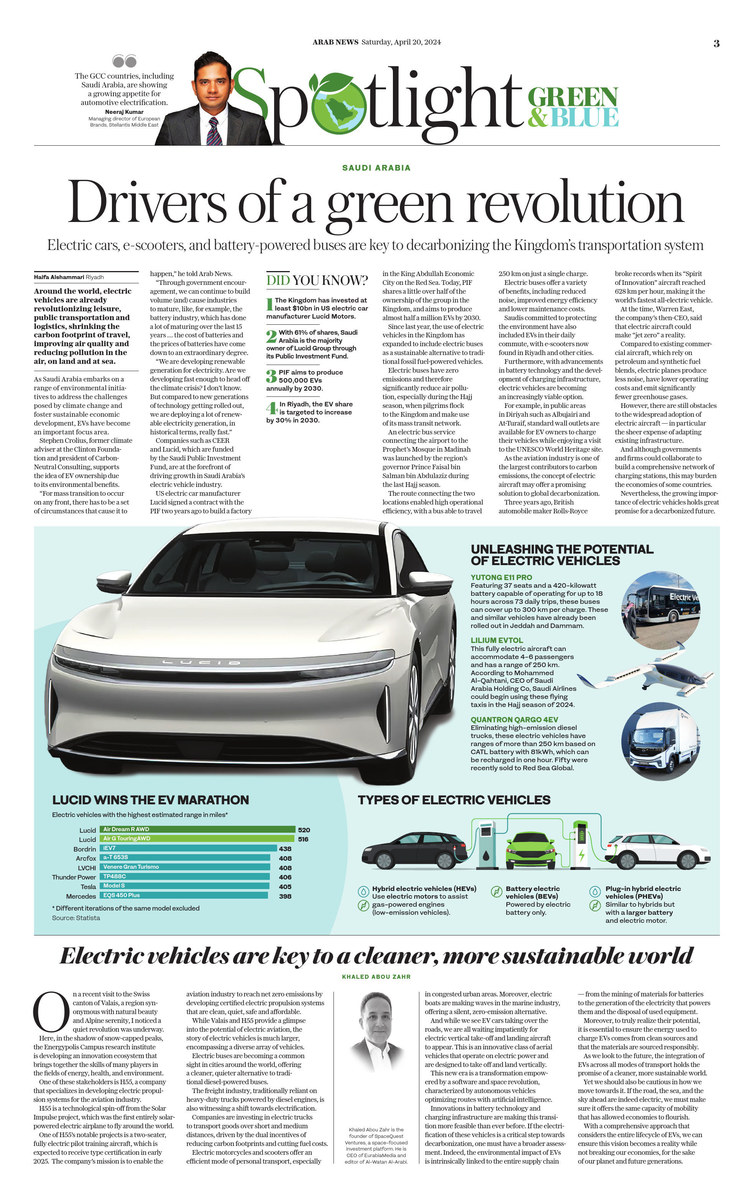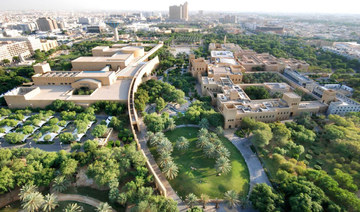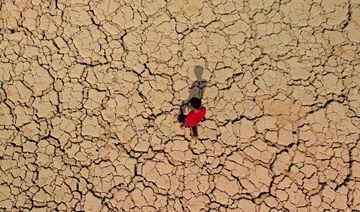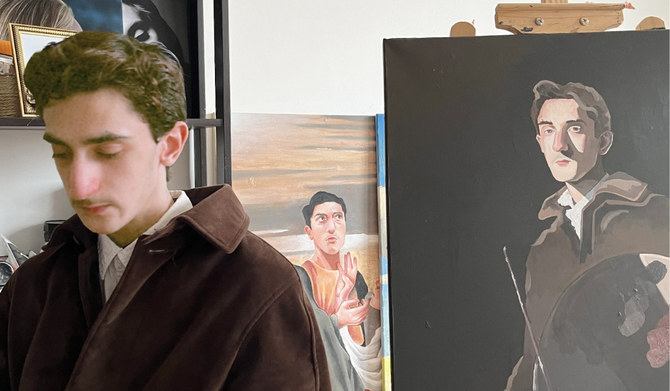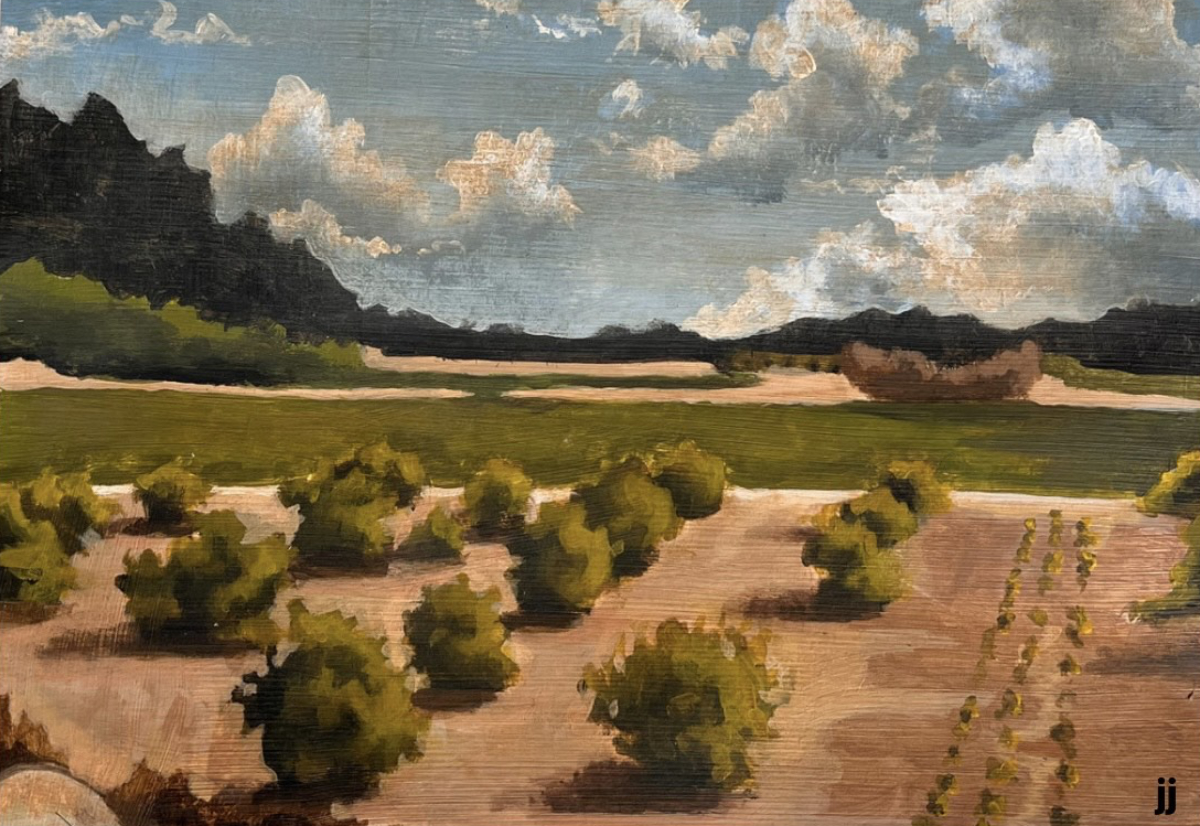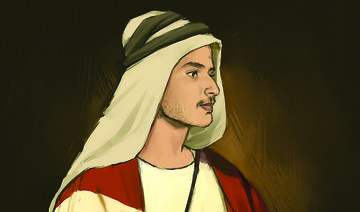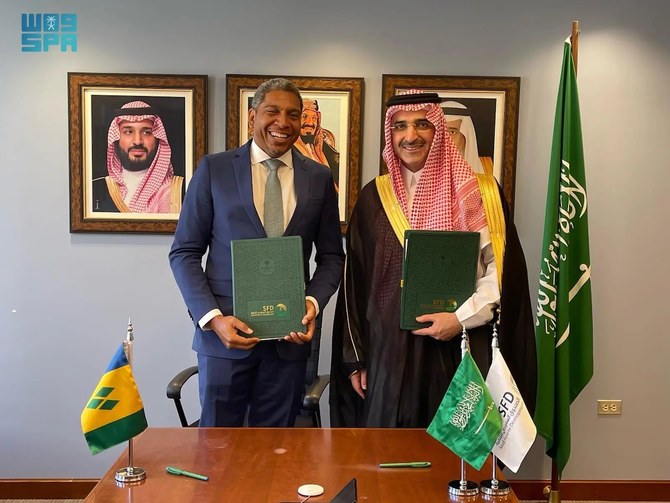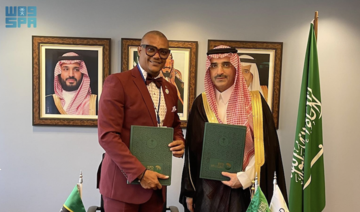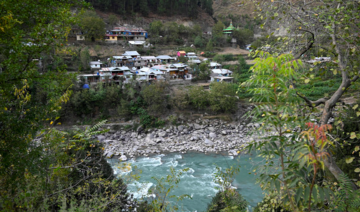DUBAI: Earth scientists and oceanographers at the King Abdullah University of Science and Technology (KAUST) have discovered that deep water in the Red Sea is replenished much faster than previously thought.
Its deep circulation was also found to be directly affected by major climatic events, including volcanic eruptions, around the world.
Understanding the deep-water ocean currents of the Red Sea enables researchers to better gauge its health, since organic matter from surface waters falls into the ocean depths, where it decomposes into its basic mineral components. The movements of these mineral-rich waters carry oxygen and important nutrients that support ecosystems and sea life.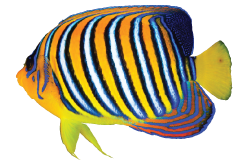
“Using temperature and salinity data gathered by six cruises from along the central axis of the Red Sea and an ocean circulation simulator, we have been able to gain further insight into the circulation of the Red Sea’s deep waters,” said Dr. Ibrahim Hoteit, professor of earth science and engineering at KAUST. “We found that the depths of the Red Sea have experienced rather rapid — around 10-year — water renewals, which is against the conventional idea that it is mostly stagnant.”
Waters occupying depths from 300 to 2,000 meters in the Red Sea are recognized as the warmest and saltiest deep-water environments in the world.
To date, research suggested that the Red Sea’s deep water is relatively stagnant, taking about 36 to 90 years to renew, and that its main source of renewal is water flowing from the northern gulfs of Suez and Aqaba into the sea’s main basin.
FASTFACT
• Saudi Arabia’s Red Sea coast is about 1,760 km in length.
• Coral reefs are known for harboring some of the highest biodiversity of benthic fauna and flora.
• The Red Sea is a narrow, semi-confined sea that combines high temperatures of around 21C, a deep basin with a maximum depth of about 2,300 meters and high salinity.
• The Red Sea hosts a deep marine environment unique among the world’s oceans.
“The model simulation convincingly linked the Red Sea deep-water renewals to the global climate variability associated with remote volcanic eruptions and the North Atlantic oscillation, an inherent atmospheric variability mostly affecting Europe,” Hoteit explained. “Volcanic eruptions tend to warm the middle atmosphere of the tropics by releasing large amounts of sulfate aerosols, which absorb the sun’s rays for periods of up to two years. The westerly jet across the Atlantic Ocean becomes stronger as the atmospheric circulation adjusts to this warming.”
 This, in turn, increases dry, cold northwesterly winds above the Red Sea: Heat is lost from the sea’s waters to the air, and the surface temperature becomes cold enough to trigger surface colder waters to sink. This is known as open-ocean deep convection.
This, in turn, increases dry, cold northwesterly winds above the Red Sea: Heat is lost from the sea’s waters to the air, and the surface temperature becomes cold enough to trigger surface colder waters to sink. This is known as open-ocean deep convection.
In contrast with previous studies, the KAUST scientists found that it was this open-ocean deep convection caused by volcanic eruptions that formed the primary source of the replenishment of the Red Sea’s deep water, while the flows of water originating in the gulfs of Suez and Aqaba represented secondary sources.
The project started when KAUST researchers sought to understand the deep circulation in the Red Sea. “Unusual cold water was clearly observed in the bottom of the Red Sea in the past, but researchers did not have enough data to build a full picture of the origins of these waters that drive the basin deep circulation,” Hoteit noted. “The KAUST models accurately reproduced the observed deep-water formation events in the northern Red Sea and allowed, for the first time, to link them to cool periods that relate to atmospheric systems originating in the North Atlantic or to the global cooling effect of remote volcanic activity.”
Findings revealed that two volcanic eruptions in the Philippines and Mexico, in 1983 and 1992, respectively, led to cooler waters in the northern Red Sea, which then dropped to its depths. “There is something unique in the Red Sea because the deep water is warm — around 21C — while in the open ocean it should be around 2C,” Hoteit said. “Once the water becomes heavy, it abruptly sinks to the bottom. So this suggests that remote volcanoes across the globe might be able to ventilate the Red Sea faster than had been reported.”
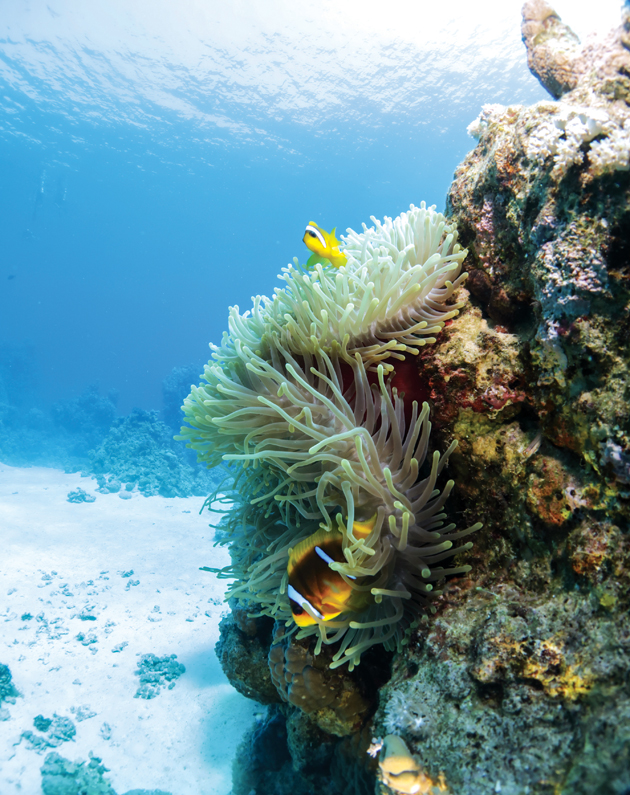
As a result, the heavy water from the surface brings with it oxygen to the depths of the sea, revitalizing its deep-sea ecosystem.
Another beneficial finding revealed that, once the heavy water drops to the Red Sea’s depths, it flows southward toward the Gulf of Aden through the Bab-El-Mandeb Strait, contributing to the mixing of the water column, which is also favorable for making nutrients available for the ecosystem.
“We are demonstrating an unusual physical mechanism that can improve the ecosystem in the depths of the sea,” Hoteit explained. “In 2017, we analyzed 30 years’ worth of satellite data of water temperatures and showed that the northern Red Sea temperatures are increasing at an alarming rate, higher than has been reported for the global oceans.”
A hike in seawater temperatures is considered detrimental for the ecosystem and marine life as deep-water formation — and the ventilation it causes — may be weakened. “There are concerns about the rise in temperature of the Red Sea, which will eventually reduce its ventilation,” he warned.
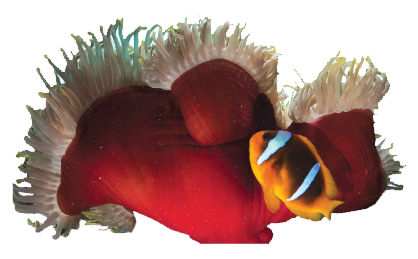 KAUST scientists are working on unraveling the southward deep pathway of these water masses that sporadically form at the surface of the northern Red Sea, understanding their impact on the basin ecosystem and assessing the fate of these highly salty waters as they ultimately flow out into the Indian Ocean.
KAUST scientists are working on unraveling the southward deep pathway of these water masses that sporadically form at the surface of the northern Red Sea, understanding their impact on the basin ecosystem and assessing the fate of these highly salty waters as they ultimately flow out into the Indian Ocean.
The researchers are also interested in studying the impact of climate change on the water renewal of the Red Sea, as increasing climate temperatures might weaken the deep-water formation events in the future and may slow down the basin ventilation.
“There is also an indication that once the water reaches the Gulf of Aden and mixes with the waters of the Arabian Sea and the Bay of Bengal, it might affect the salinity in these basins which, in turn, may be linked to the formation of hurricanes,” Hoteit concluded. “It would be very interesting to monitor the impact of the deep-water formation events on the environment and the ecosystem, but this will require considerable long-term efforts to observe the movements of these waters along the Red Sea basin out to the Indian Ocean.”



